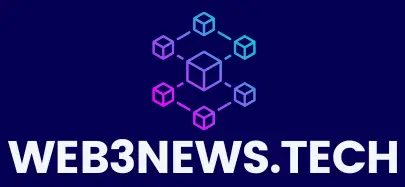The Evolution of Blockchain: From Cryptocurrency to Web3
Blockchain technology has come a long way since its inception, evolving from a novel concept underpinning the first cryptocurrency to a cornerstone of the emerging Web3 era. This evolution marks a significant shift in how we perceive and utilize digital technologies, offering unprecedented levels of transparency, security, and decentralization.
Outline
- Introduction
- Brief overview of blockchain technology
- Importance of blockchain in modern technology
- The Genesis of Blockchain
- Early concepts and inspirations
- Creation of Bitcoin and the first blockchain
- Blockchain and Cryptocurrencies
- Bitcoin as the pioneer cryptocurrency
- The rise of alternative cryptocurrencies (Altcoins)
- Impact of cryptocurrencies on finance
- Beyond Bitcoin: Expanding Blockchain’s Use Cases
- Ethereum and the introduction of smart contracts
- Development of decentralized applications (DApps)
- Initial Coin Offerings (ICOs) and their influence
- Blockchain in Various Industries
- Financial services and banking
- Supply chain management
- Healthcare
- Real estate
- The Transition to Web3
- Definition and key concepts of Web3
- Differences between Web2 and Web3
- How blockchain underpins Web3
- Core Components of Web3
- Decentralized finance (DeFi)
- Non-fungible tokens (NFTs)
- Decentralized autonomous organizations (DAOs)
- Interoperability and cross-chain solutions
- Challenges in Blockchain and Web3 Adoption
- Scalability issues
- Regulatory concerns
- Security risks and vulnerabilities
- User experience and accessibility
- Innovations and Future Trends
- Layer 2 solutions
- Quantum computing and blockchain
- Enhanced privacy measures
- Integration with artificial intelligence (AI)
- Case Studies of Web3 Projects
- Ethereum 2.0
- Polkadot
- Chainlink
- Impact on Society and Economy
- Financial inclusion
- Democratization of technology
- Empowerment of content creators and consumers
- The Role of Governments and Regulations
- Current regulatory landscape
- Potential future regulatory frameworks
- Balancing innovation with protection
- How to Get Started with Blockchain and Web3
- Setting up a digital wallet
- Understanding and using DApps
- Participating in a DAO
- Investing in Blockchain and Web3
- Risks and rewards
- Diversification strategies
- Long-term vs. short-term investment perspectives
- Conclusion
- Recap of blockchain’s evolution
- The transformative potential of Web3
- FAQs
- What is blockchain technology?
- How is Web3 different from Web2?
- What are the benefits of decentralized applications?
- What risks are associated with investing in Web3?
- How can one stay updated on blockchain advancements?
The Genesis of Blockchain
The concept of blockchain was inspired by the need for a secure, decentralized ledger system. It gained prominence with the creation of Bitcoin in 2008 by an anonymous entity known as Satoshi Nakamoto. Bitcoin’s whitepaper introduced blockchain as the underlying technology, providing a transparent and immutable record of transactions.
Blockchain and Cryptocurrencies

Bitcoin: The Pioneer Cryptocurrency
Bitcoin was the first application of blockchain technology, designed as a peer-to-peer electronic cash system. It revolutionized the financial landscape by enabling secure, decentralized transactions without the need for intermediaries.
The Rise of Altcoins
Following Bitcoin’s success, numerous alternative cryptocurrencies, or altcoins, emerged. These included Litecoin, Ripple, and later Ethereum, each offering unique features and improvements over Bitcoin. The proliferation of altcoins expanded the blockchain ecosystem, driving innovation and competition.
Impact on Finance
Cryptocurrencies disrupted traditional finance by introducing new ways to store, transfer, and invest value. They offered lower transaction fees, faster settlements, and enhanced security, challenging conventional banking and payment systems.
Beyond Bitcoin: Expanding Blockchain’s Use Cases
Ethereum and Smart Contracts
Ethereum, introduced in 2015 by Vitalik Buterin, expanded blockchain’s capabilities by introducing smart contracts. These self-executing contracts with coded terms enabled complex transactions and automated processes, paving the way for decentralized applications (DApps).
Development of DApps
DApps run on blockchain networks, offering decentralized and transparent services across various sectors. From finance and gaming to social media and supply chain management, DApps leverage blockchain to enhance security, reduce costs, and eliminate intermediaries.
Initial Coin Offerings (ICOs)
ICOs emerged as a fundraising mechanism for blockchain projects, allowing developers to raise capital by issuing tokens. Despite regulatory challenges and market volatility, ICOs played a crucial role in funding and fostering innovation in the blockchain space.
Blockchain in Various Industries
Financial Services and Banking
Blockchain streamlines financial processes, reduces fraud, and enhances transparency. Banks and financial institutions are adopting blockchain for cross-border payments, clearing, and settlement.
Supply Chain Management
Blockchain ensures traceability and transparency in supply chains, reducing fraud and improving efficiency. Companies like IBM and Walmart are leveraging blockchain to track products from origin to consumer.
Healthcare
Blockchain enhances data security and interoperability in healthcare. It enables secure sharing of patient records, ensuring data integrity and patient privacy.
Real Estate
Blockchain simplifies property transactions by reducing paperwork and increasing transparency. It enables secure, immutable records of property ownership and transfers.
The Transition to Web3
Definition and Key Concepts of Web3
Web3 represents the next phase of the internet, characterized by decentralized, peer-to-peer interactions. Unlike Web2, which relies on centralized servers and platforms, Web3 leverages blockchain to empower users with control over their data and digital identities.
Differences Between Web2 and Web3
Web2 is dominated by centralized entities like Google, Facebook, and Amazon, which control user data and monetize it. In contrast, Web3 prioritizes user ownership, privacy, and decentralization, reducing the power of intermediaries.
How Blockchain Underpins Web3
Blockchain is the foundational technology for Web3, enabling decentralized networks and applications. It ensures transparency, security, and trust, facilitating peer-to-peer interactions and transactions.
Core Components of Web3
Decentralized Finance (DeFi)
DeFi leverages blockchain to recreate traditional financial systems in a decentralized manner. It includes lending, borrowing, trading, and earning interest without intermediaries.
Non-Fungible Tokens (NFTs)
NFTs are unique digital assets representing ownership of real-world or digital items. They revolutionize art, gaming, and entertainment by enabling verifiable ownership and provenance.
Decentralized Autonomous Organizations (DAOs)
DAOs are blockchain-based organizations governed by smart contracts and community voting. They enable decentralized decision-making and management, enhancing transparency and accountability.
Interoperability and Cross-Chain Solutions
Interoperability ensures that different blockchain networks can communicate and interact seamlessly. Cross-chain solutions like Polkadot and Cosmos facilitate data and asset transfers between blockchains, enhancing the Web3 ecosystem.
Challenges in Blockchain and Web3 Adoption
Scalability Issues
Blockchain networks face scalability challenges, impacting their ability to handle large volumes of transactions. Solutions like sharding and Layer 2 protocols aim to address these limitations.
Regulatory Concerns
The decentralized nature of blockchain poses regulatory challenges. Governments are grappling with how to regulate cryptocurrencies, DeFi, and other blockchain applications without stifling innovation.
Security Risks and Vulnerabilities
Despite their security advantages, blockchain networks are not immune to attacks. Smart contract bugs, 51% attacks, and phishing scams pose significant risks to users and platforms.
User Experience and Accessibility
The complexity of blockchain technology can hinder adoption. User-friendly interfaces, education, and improved accessibility are crucial for mainstream adoption.
Innovations and Future Trends
Layer 2 Solutions
Layer 2 protocols like Lightning Network and Optimistic Rollups enhance blockchain scalability by processing transactions off-chain and settling them on the main chain.
Quantum Computing and Blockchain
Quantum computing poses both opportunities and threats to blockchain. While it can enhance computational power, it also threatens current cryptographic algorithms, necessitating the development of quantum-resistant protocols.
Enhanced Privacy Measures
Innovations like zero-knowledge proofs and confidential transactions aim to enhance privacy without compromising transparency, ensuring secure and private blockchain interactions.
Integration with Artificial Intelligence (AI)
AI and blockchain integration can revolutionize various sectors, from finance and healthcare to supply chain management. AI can enhance blockchain analytics, fraud detection, and automated decision-making.
Case Studies of Web3 Projects
Ethereum 2.0
Ethereum 2.0 aims to address scalability and security issues with a transition from Proof of Work (PoW) to Proof of Stake (PoS). It introduces shard chains to improve transaction throughput and efficiency.
Polkadot
Polkadot enables interoperability between different blockchains, fostering a decentralized web. Its unique relay chain and parachain architecture enhance scalability and collaboration.
Chainlink
Chainlink provides decentralized oracles that connect smart contracts with real-world data. It ensures the reliability and accuracy of data feeds, enabling advanced blockchain applications.
Impact on Society and Economy
Financial Inclusion
Blockchain and Web3 technologies democratize access to financial services, empowering the unbanked and underbanked populations. They reduce barriers to entry and offer inclusive financial solutions.
Democratization of Technology
Web3 shifts control from centralized entities to individuals, promoting user autonomy and ownership. It enables peer-to-peer interactions and reduces dependence on intermediaries.
Empowerment of Content Creators and Consumers
NFTs and decentralized platforms empower creators by providing direct access to audiences and fair compensation. Consumers benefit from transparent and verifiable ownership of digital assets.
The Role of Governments and Regulations
Current Regulatory Landscape
Governments worldwide are developing frameworks to regulate blockchain and cryptocurrencies. The focus is on balancing innovation with consumer protection and financial stability.
Potential Future Regulatory Frameworks
Future regulations may include clearer guidelines for ICOs, DeFi, and NFTs. Collaboration between regulators and industry stakeholders is crucial for developing effective and adaptable regulations.
Balancing Innovation with Protection
Regulatory frameworks must protect consumers and investors while fostering innovation. Striking this balance is key to sustainable blockchain and Web3 development.
How to Get Started with Blockchain and Web3
Setting Up a Digital Wallet
To participate in blockchain and Web3, set up a digital wallet like MetaMask or Trust Wallet. These wallets store your digital assets and enable interactions with DApps.
Understanding and Using DApps
Explore various DApps to understand their functionalities and benefits. Engage with platforms like Uniswap, Aave, and OpenSea to experience decentralized finance, lending, and NFTs.
Participating in a DAO
Join a DAO to participate in decentralized governance and decision-making. DAOs like MakerDAO and DAOHaus offer opportunities to contribute to projects and earn rewards.
Investing in Blockchain and Web3
Risks and Rewards
Investing in blockchain and Web3 can be highly rewarding but comes with risks. Market volatility, regulatory changes, and technological uncertainties are key considerations.
Diversification Strategies
Diversify your investments across different blockchain projects and asset classes. This reduces risk and enhances potential returns.
Also read: Web3 vs Web2: Understanding the Evolution of the Internet
Long-Term vs. Short-Term Investment Perspectives
Adopt a balanced approach with both long-term and short-term investments. Long-term investments focus on fundamental value, while short-term investments capitalize on market trends.
Conclusion
Blockchain technology has evolved from a niche innovation to a transformative force driving the Web3 revolution. From its early days with Bitcoin to the diverse applications and ecosystems of today, blockchain continues to redefine finance, technology, and society. As Web3 gains momentum, it promises to democratize access, enhance security, and empower users worldwide. The journey of blockchain is far from over, and its potential to shape the future is immense.
FAQs
What is blockchain technology?
Blockchain is a decentralized, immutable ledger technology that records transactions across multiple computers. It ensures transparency, security, and trust without relying on central authorities.
How is Web3 different from Web2?
Web3 is decentralized and peer-to-peer, prioritizing user control and privacy. Web2 is centralized, with data controlled by platforms like Google and Facebook.
What are the benefits of decentralized applications?
DApps offer enhanced security, transparency, and efficiency. They eliminate intermediaries, reducing costs and increasing user control.
What risks are associated with investing in Web3?
Risks include market volatility, regulatory uncertainties, and technological vulnerabilities. Conduct thorough research and diversify investments to mitigate these risks.
How can one stay updated on blockchain advancements?
Stay informed by following industry news, participating in blockchain communities, and attending conferences and webinars. Engaging with platforms like GitHub and Reddit can also provide valuable insights.

